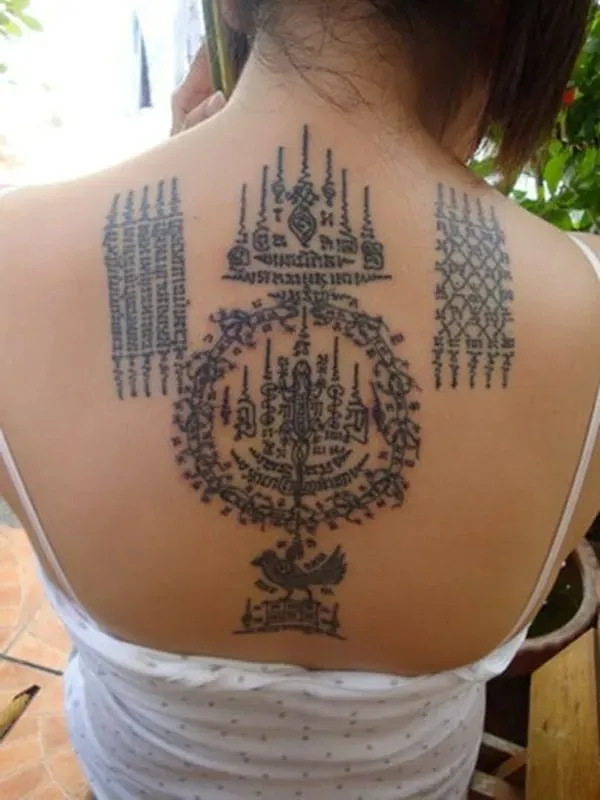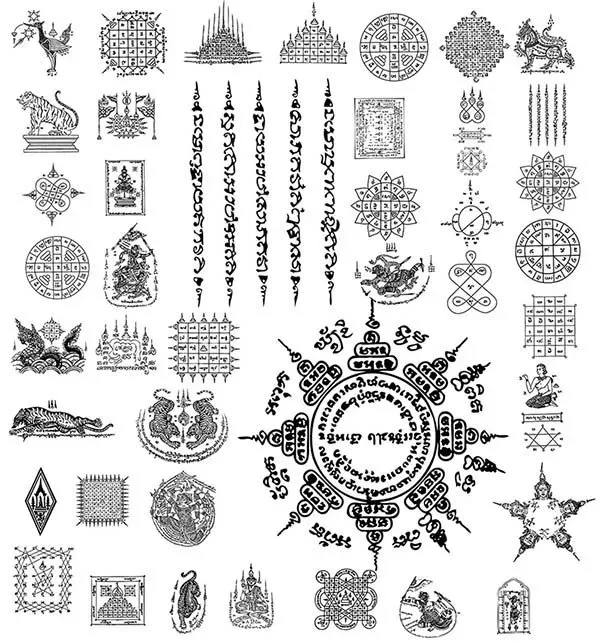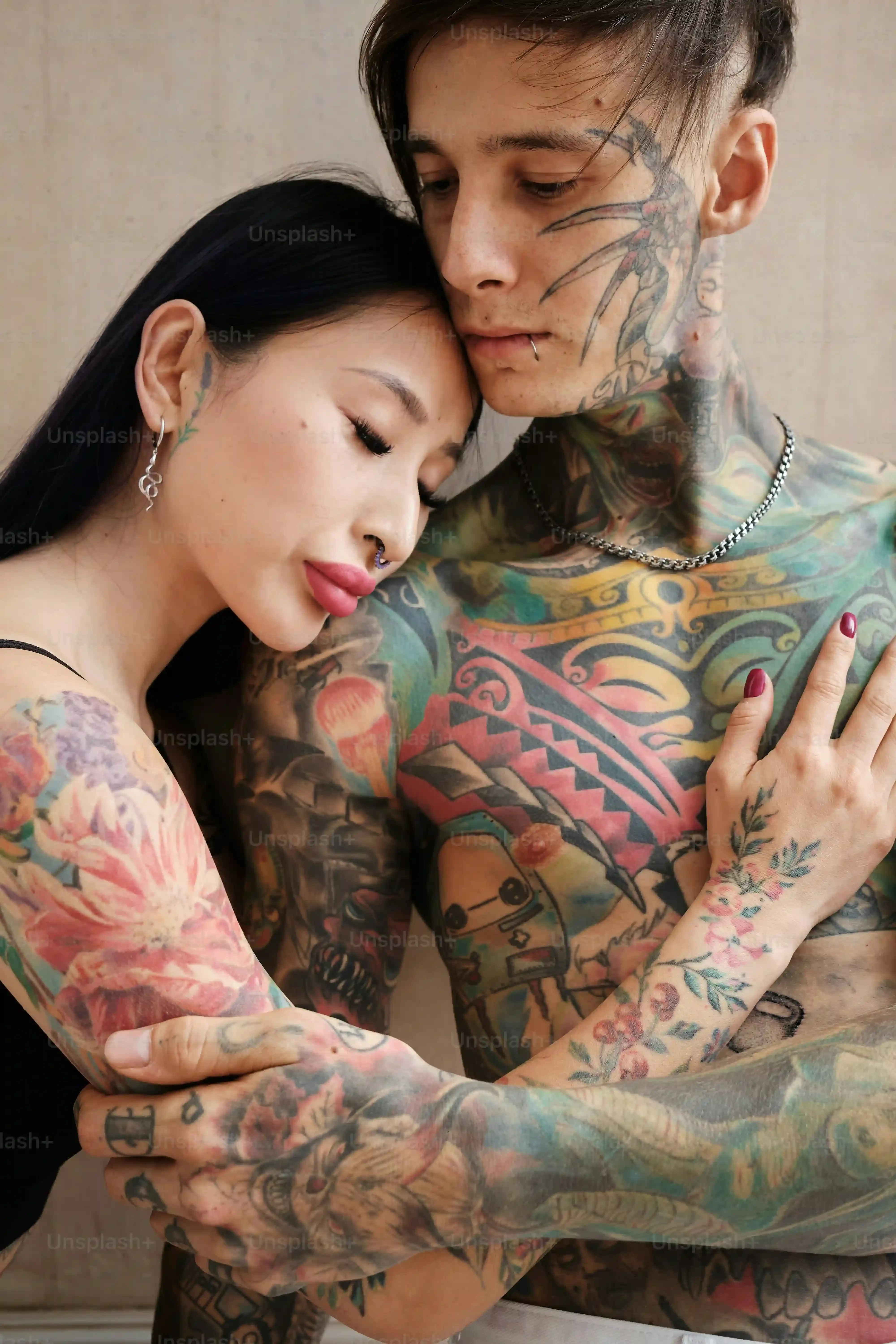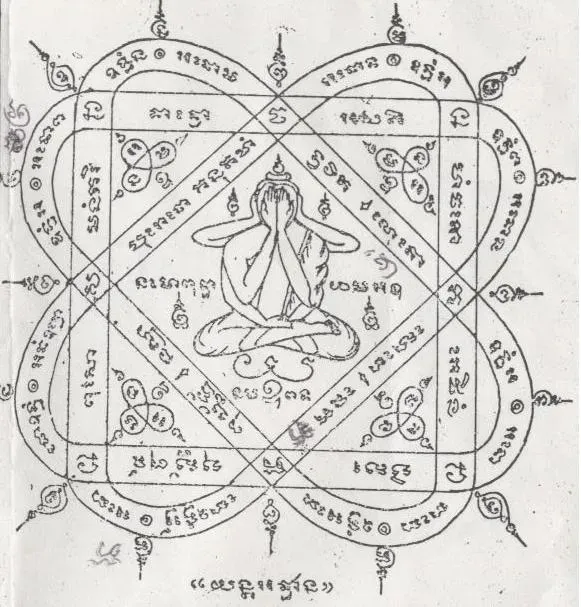Table of Contents
Many people admire thai tattoo designs for their intricate patterns and striking appearance. They see the tigers, the geometric shapes, the flowing lines. But these aren't just cool images etched onto skin. Thai tattoo designs, particularly the sacred Sak Yant, carry centuries of history, spiritual weight, and deep-seated belief. They are protective amulets, blessings, and commitments, not mere body art from a street shop. Getting one involves tradition, ritual, and a connection to a lineage of masters.
Unpacking Thai Tattoo Designs: More Than Just Ink
Unpacking Thai Tattoo Designs: More Than Just Ink
You see these incredible images – tigers, geometric grids, intricate script – and think, 'Wow, cool tattoo.' And yeah, they *are* visually stunning. But when we start unpacking Thai tattoo designs, especially the sacred Sak Yant, you quickly realize you're dealing with something far, far deeper than just ink on skin. These aren't impulse decisions or fashion statements; they are powerful talismans, believed to offer protection, luck, and strength to the wearer. They come with history, tradition, and often, a set of vows you're expected to live by. It's a whole system, a spiritual practice woven into the art, making the phrase 'Unpacking Thai Tattoo Designs: More Than Just Ink' a pretty accurate description of what's really going on.
The Ancient Roots and Spiritual Meanings of Thai Tattoo Designs
The Ancient Roots and Spiritual Meanings of Thai Tattoo Designs
so where did all this begin with Thai tattoo designs? We're talking centuries back, blending animist beliefs, Hinduism, and later, Buddhism. These aren't just cool pictures; they're rooted in the idea that specific geometric patterns, animal forms, and ancient script (often Khmer or Pali) hold inherent power. Monks and Ruesi (hermit-like ascetics) were the original masters, applying these markings not with modern machines, but traditionally with a long bamboo or metal spike called a *khem*. The point was protection – from harm, from evil spirits, even from bad luck. Each design, each line, each syllable of the script had a specific purpose and invoked certain blessings or powers, making the spiritual meanings of Thai tattoo designs the absolute core of the practice.
Exploring Popular Thai Tattoo Designs and Their Symbolism
Exploring Popular Thai Tattoo Designs and Their Symbolism
The Roar of the Tiger and the Power of Gao Yord
so you're diving into the world of thai tattoo designs, and pretty quickly you'll run into the big hitters. The Tiger Yant (Suea) is probably one of the most recognized. It's not just a cool cat; it's about power, strength, and protection. Think of it as wearing your inner beast on your sleeve, or back, or wherever you put it. It's supposed to give you the courage to face challenges and ward off enemies. Then there's the Gao Yord, the Nine Peaks Yant. This is a fundamental design, often placed at the back of the neck. It represents nine sacred mountains and is considered a universal blessing, offering protection, good luck, and success.
Lines of Fortune and Geometric Shields
Beyond the animalistic power, many thai tattoo designs rely on intricate lines and geometric shapes. The Hah Taew (Five Lines) is another incredibly famous one, thanks in part to Angelina Jolie. Each line represents a different blessing: protection from unjust punishment, protection from bad luck, protection from black magic, boosting good fortune and charisma, and gaining popularity and attraction. Simple lines, powerful punch. You also see a lot of complex geometric Yants, sometimes looking like grids or mandalas. These are often about protection from harm, control over oneself, or boosting wealth and prosperity. Each symbol, each curve, each line isn't random; it's part of an ancient language designed to channel specific energies.
Here's a quick look at some common designs and their general intent:
- Gao Yord (Nine Peaks): Universal blessings, protection, good luck, success.
- Hah Taew (Five Lines): Protection from various misfortunes, charm, good fortune.
- Suea (Tiger): Power, strength, protection, authority.
- Paetch Payatorn (Charming Lover): Charm, popularity, attraction.
- Yant Grao Paetch (Diamond Armor): Ultimate protection, invincibility against physical harm.
- Hanuman (Monkey God): Protection, strength, agility, loyalty.
The Art of Getting Thai Tattoo Designs: Masters, Methods, and Rituals
The Art of Getting Thai Tattoo Designs: Masters, Methods, and Rituals
so you've seen the stunning designs and read about the power they supposedly hold. Now you're probably wondering how you actually *get* one of these traditional Thai tattoo designs. This isn't like walking into your local street shop and picking something off the wall. Getting a traditional Sak Yant is a whole different ballgame. It involves seeking out a master, often a monk or a lay practitioner known as an Ajarn. These aren't just skilled artists; they are spiritual conduits, trained in the ancient methods and possessing the knowledge of the sacred script and rituals. The process itself is traditional, typically using a long metal spike called a *khem*, tapped by hand to push the ink into the skin. It's definitely not a quiet, sterile experience like a coil or rotary machine. There’s chanting, prayers, and a tangible sense of ritual throughout. This focus on the masters, methods, and rituals is what distinguishes a genuine Sak Yant experience.
Thinking about finding a master? Here are a few things to consider:
- Reputation is key: Ask around, read reviews (if you can find them), and look at their work – not just the finished product, but the environment and their approach.
- Language barrier: Many traditional masters don't speak English. Bringing a Thai speaker with you is almost essential to understand the process, the design's meaning, and any vows you might be given.
- Donation, not price: It's typically not a fixed price. You offer a donation to the master and the temple or samnak (their spiritual center).
- Prepare for discomfort: The hand-poked method is different from machine tattooing. It can be more intense and takes longer.
- Hygiene standards vary: While many masters are becoming more aware, hygiene might not be what you're used to. Research and observe carefully. Some masters use a single needle for multiple people, which carries risks. Others use individual, sterilized needles. Know what you're getting into.
Living with Your Thai Tattoo Designs: Vows and Respect
Living with Your Thai Tattoo Designs: Vows and Respect
The Ink is Just the Start: Embracing the Commitment
So, you've gone through the process. You have your stunning Thai tattoo designs inked onto your skin, maybe a powerful tiger or a protective Gao Yord. You might feel a sense of accomplishment, perhaps even a buzz of the energy the master infused into it. But here’s the kicker: getting the tattoo is often just the beginning of the journey. These aren't just passive pieces of art. Traditional thai tattoo designs come with responsibilities. The power and protection they offer are often conditional, tied directly to how you live your life afterward. It’s a spiritual contract, if you will, and breaking the terms can, according to belief, diminish or nullify the tattoo’s benefits. It demands a certain level of respect and adherence to principles.
Understanding the Vows: What Not to Do
Before the master finishes, or sometimes right after, they will often give you a set of vows or rules to follow. These vary depending on the master, the specific Yant, and the tradition they come from, but there are common threads. Think of them less like commandments carved in stone and more like guidelines for maintaining spiritual purity and respect. Breaking these vows is seen as disrespectful to the master, the tradition, and the power within your thai tattoo designs. It's not always about major sins; sometimes it's simple things, but they require conscious effort and mindfulness in your daily life.
Common Vows Associated with Sak Yant (Note: These can vary by master):
- Do not kill another person. (Seems obvious, but worth stating)
- Do not steal.
- Do not lie to deceive others.
- Do not have sexual relations with a married person.
- Do not get drunk to the point of losing control. (Some masters are stricter than others on this one)
- Do not walk under a female's skirt or sarong. (Traditional belief about lower spiritual energy)
- Do not eat food from a public wedding or funeral (unless it's your own family).
- Do not speak ill of your mother.
Maintaining the Power: Respect and Re-Blessing
Living with your thai tattoo designs means more than just avoiding certain actions. It's also about maintaining a respectful attitude towards the ink and the power it represents. Many wearers will visit their master periodically for re-blessings, where the master chants prayers and blows onto the tattoo to 'recharge' its power. This ritual acknowledges the ongoing connection and commitment. It’s about keeping the spiritual channel open and vibrant. Ignoring the vows or neglecting the tattoo, in the traditional view, is like letting the batteries run out on your protective charm. It’s a lifelong commitment, a constant reminder of the principles you agreed to uphold when you chose to carry these ancient symbols on your skin.
More Than Just Ink: The Lasting Impact of Thai Tattoo Designs
We've explored the layers of history and spiritual significance embedded in thai tattoo designs. These are not casual choices but deliberate imprints carrying ancient blessings and serious commitments. From the protective power of the tigers to the geometric harmony of sacred patterns, each design tells a story rooted in tradition and belief. Getting a Sak Yant is an experience tied to ritual and respect for the master who applies it. Understanding these elements reveals that a traditional Thai tattoo is far more than just decoration; it's a spiritual undertaking, a protective shield, and a lifelong connection to a unique cultural practice.